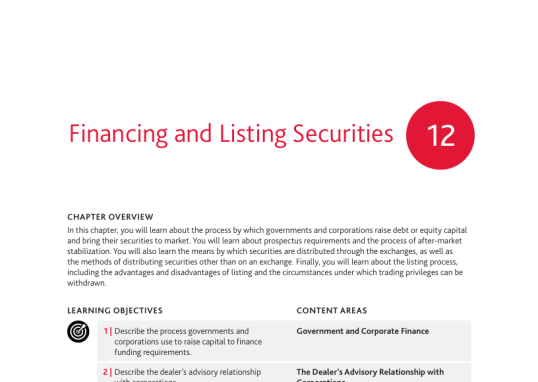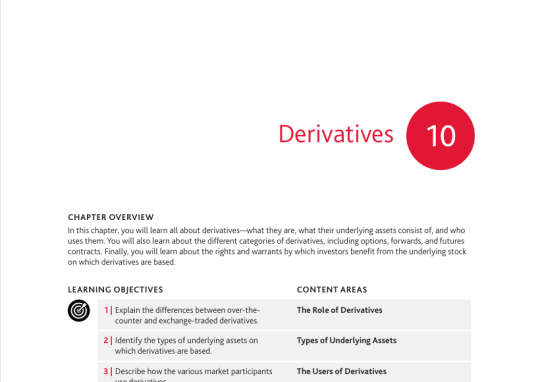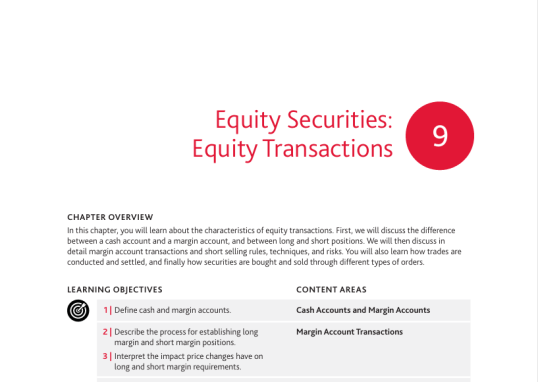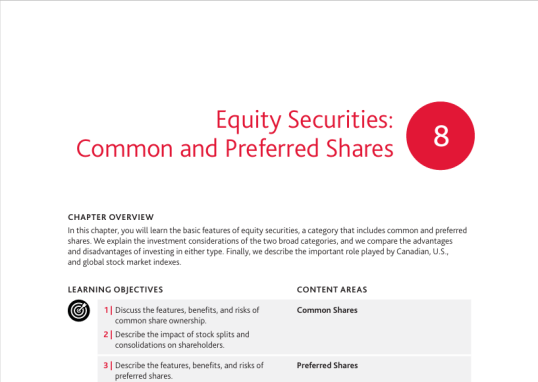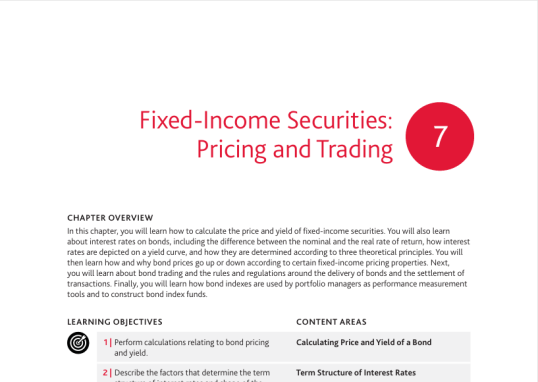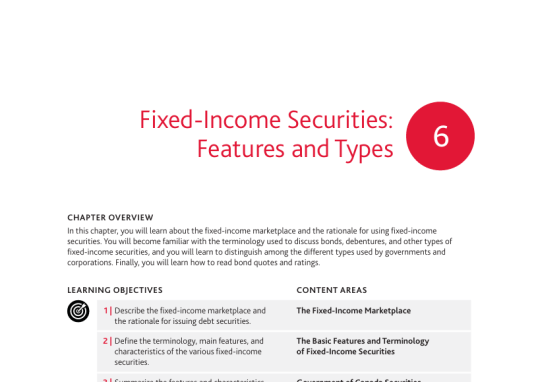CSC V.1 Chapter11 notes
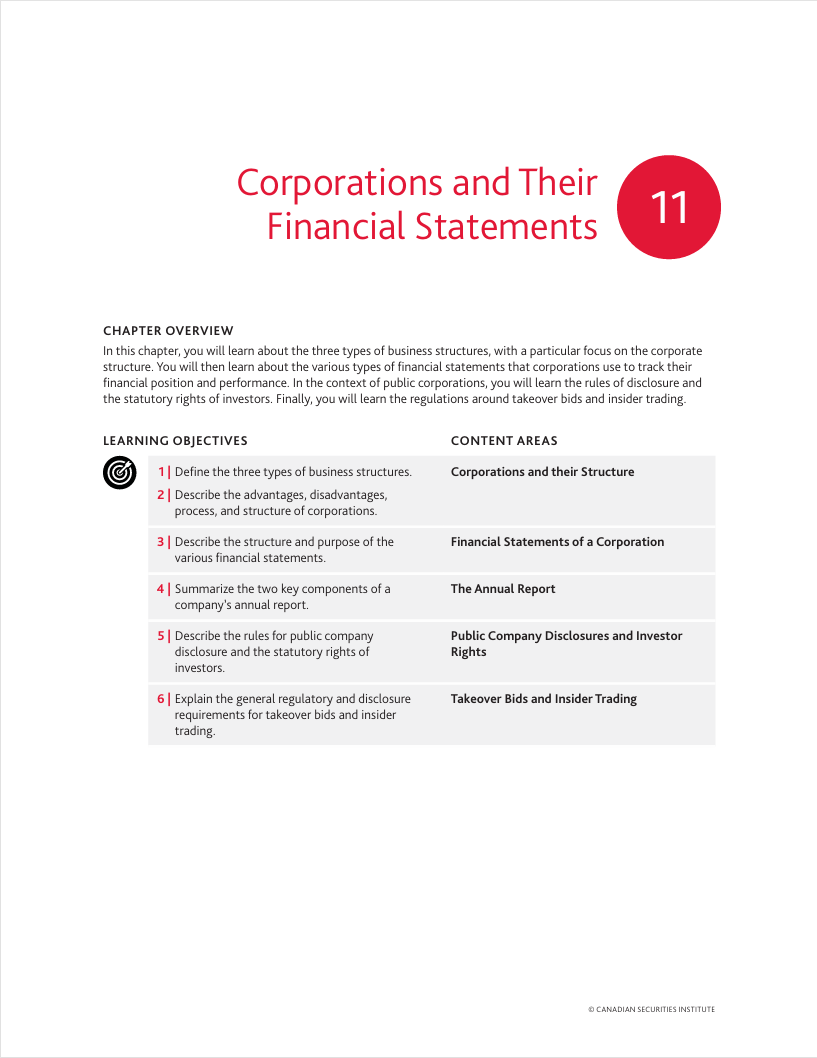
In
CORPORATIONS AND THEIR FINANCIAL STATEMENT
BUSINESS STRUCTURES
- Sole proprietorship – one person runs his/her business and is taxed on earnings at his/her individual rate. Owner is personally liable for debts
- Partnerships – two or more people contributing to the business, in the form of capital, expertise or both. General partners are involved in the day-to-day operations of the business and are personally liable for debts; Limited partners cannot participate in the daily business activities and their liability is limited to their original investment
- A corporation is a distinct legal entity separate from the people who own it. Property acquired by the corporation belongs to the corporation itself, not its shareholders. Shareholders have no liability for the corporation’s debt. Corporations can easily raise equity and debt and therefore are more suitable for large business ventures
ADVANTAGES OF INCORPORATION
- Limited liability of shareholders – the most money you can lose is what you pay for the shares, either through the
primary or secondary market - Continuity of existence – corporation’s existence only ends through an event like bankruptcy
- Transfer of ownership – easily facilitated through the auspices of the stock exchange
- Ability to finance – raising of capital easier than for sole proprietorships or partnerships
- Growth – corporate structure well suited to handle the large amounts of capital needed to grow a business
- Professional management – the ownership and managerial functions are separated
DISADVANTAGES OF INCORPORATION
- Inflexibility – corporation is subject to many rules, including the need for continuous disclosure of information
- Taxation – the possibility of double taxation arises
- Expense – additional costs include annual returns, audits, shareholders’ meetings, etc.
- Capital withdrawal – statutory procedures for redemption and purchase of shares by the corporation itself are onerous
PRIVATE AND PUBLIC CORPORATIONS
- Private corporations limit in their charters the number of shareholders to no more than fifty, the public is prohibited from subscribing, and shareholders are restricted in their ability to transfer shares
- Public corporations do not have the restrictions that private corporations do. All companies that trade on the stock exchange are, by definition, public corporations
- A corporation is regulated by:
- The federal or provincial charter under which it is
incorporated - Its own charter
- Its by-laws
- Provisions in the by-laws deal with such items as shareholder meetings and how to notify shareholders, information about directors, declaration and payment of dividends, date of fiscal year end, and signing authority
CORPORATIONS (Cont’d)
- All shareholders must be given the opportunity to receive materials relating to shareholder meetings, including
receiving proxy forms. A proxy is a power of attorney that gives a designated person the authority to vote the absentee shareholder’s shares. It is mandatory to send out proxy forms before a shareholder meeting, accompanied by an information circular which contains details about what will be voted on at the meeting - Voting trusts may be formed when a corporation is undergoing a restructuring. Shareholders deposit their shares with a trustee, which effectively means that the shareholders do not have the right to vote and control the company’s direction. The purpose is to protect the interests of others who may contribute capital to the company in its time of difficulty
THE CORPORATE STRUCTURE
- Directors: must be of the age of majority and of sound mind. Directors normally set company policy, appoint and supervise officers, responsible for decisions to issues shares; personally liable for illegal acts of the corporation done with their knowledge and consent; personally responsible for employee wages; and must act honestly and in good faith
- Chairman of the board: elected by the board of directors. May be chief executive officer or combined with that of president. Chairman presides over meeting of the board
- President: appointed by and responsible to the board of directors
- Vice-presidents: appointed by and responsible to the president
- Officers: appointed by the board of directors
FINANCIAL STATEMENTS
- There are three basic financial statements: Statement of Financial Position, Statement of Comprehensive Income, and Statement of Cash Flows
- The Statement of Financial Position – also known as the balance sheet, is a snapshot of a company’s financial position at a specific date. In annual reports, that date is the last day of the company’s fiscal year. This statement shows the company’s assets (what it owns), its liabilities (what it owes) and the difference between the two represents the equity the shareholders have in the company
- The Statement of Comprehensive Income – also known as the Income Statement or Profit and Loss Statement – shows how much revenue a company received during the year, and the expenses incurred associated with generating that revenue. The difference between the two is the company’s profit or loss
- The Statement of Cash Flows fills the gap between the balance sheet and income statement by providing information about how the company generated and spent its cash during the year
CLASSIFICATION OF ASSETS
- Basic equation of the Statement of Financial Position: ASSETS = LIABILITIES + SHAREHOLDERS EQUITY
- Current Assets are cash and other assets such as Accounts Receivables (money owed from customers), Prepaid Expenses and Inventories (product to be sold in the future) where cash is expected within one year or a normal operating cycle of the business. Current assets are listed in order of liquidity from most liquid to least liquid
- Property, Plant and Equipment – also known as Capital Assets – consist of land, buildings, and equipment used in the day-to-day operation of the business. These assets are shown at historical cost, less accumulated amortization and depreciation. This is understood as the net carrying amount (book value)
CLASSIFICATION OF ASSETS (cont’d)
- Capitalization refers to the recording of an expenditure as an asset rather than an expense. Capitalization means that an asset appears on the Statement of Financial Position as opposed to being reflected as an expense for that period
- Deferred charges represent payments made by the company for which the benefit will extend over a period of years – similar to Prepaid Expenses, but over a longer period of time
- Intangible assets are assets that cannot be touched, weighed or measured. Goodwill is created when Company A purchases Company B for a value in excess of the fair value of Company B’s assets
INVENTORY METHODS
- There are two methods for valuing inventory, first-in-first out (FIFO), and Weighted Average
- Imagine that in a given period, a widget costs $1 on Day One. On Day Two it costs $2. On Day Three, the Company sells the Widget for $3
- FIFO methodology: The company would sell the unit it purchased first for $1 and record profit of $2. It would keep the unit it purchased for $2 and record inventory of $2
- Weighted Average: The company would average the cost of the units; therefore it would record profit of $1.50 and inventory of $1.50
- Bottom line: In eras of rising prices, FIFO accounting results in higher profits and higher inventories than weighted average
DEPRECIATION AND AMORTIZATION
- Companies depreciate fixed assets (such as equipment), amortize intangible assets (such as patents and trademarks) and deplete wasting assets (oil and timber)
- The logic behind this accounting treatment is that assets lose value over time. The loss in value must be reflected on both the Statement of Financial Position – where the carrying value of the asset decreases – and the Statement of Comprehensive Income – where depreciation or amortization is recorded annually
- There are two depreciation methods – straight-line and declining balance methods. The straight line method depreciates an equal amount annually; the declining balance method depreciates most in the first year and declines from there
STRAIGHT LINE DEPRECIATION
- Assume that a company purchased a machine for $1,000,000 that will provide four years of useful life, then be worth $100,000 in salvage value at the end of that time
- Straight line method: Annual Depreciation: (Purchase value – Salvage value)/Years of use = ($1,000,000 – $100,000)/4 = $225,000
$225,000 would be the annual depreciation. After one year, the machine would have a carrying value of $775,000. After two years its carrying value would be $550,000. After three years, $325,000. After year four, it would be depreciated to its salvage value of $100,000.
| Purchase Value | Annual Depreciation | Accumulated Depreciation | Net Carrying Value | |
| T = 0 | $1,000,000 | $0 | $0 | $1,000,000 |
| T = 1 | $1,000,000 | $225,000 | $225,000 | $ 775,000 |
| T = 2 | $1,000,000 | $225,000 | $450,000 | $ 550,000 |
| T = 3 | $1,000,000 | $225,000 | $675,000 | $ 325,000 |
| T = 4 | $1,000,000 | $225,000 | $900,000 | $ 100,000 |
- If the company sold the machine after, for example, Year Two for an amount other than $550,000, it would record the difference as either a gain or loss. If the machine were sold for $560,000, there would be a $10,000 gain. If the machine were sold for $525,000, there would be a $25,000 loss
DOUBLE-DECLINING DEPRECIATION
- For the double declining balance method, the annual depreciation is determined by:
(100% divided by number of years of use) x 2… = 100%/4 x 2 = 50%.
This machine would be depreciated at a rate of 50% of its original purchase price, then the remaining carrying value would be similarly depreciated until the asset depreciated to its salvage value
| Purchase Value | Annual Depreciation | Accumulated Depreciation | Net Carrying Value | |
| T = 0 | $1,000,000 | $0 | $0 | $1,000,000 |
| T = 1 | $1,000,000 | $500,000 | $500,000 | $ 500,000 |
| T = 2 | $1,000,000 | $250,000 | $450,000 | $250,000 |
| T = 3 | $1,000,000 | $125,000 | $875,000 | $ 125,000 |
| T = 4 | $1,000,000 | $ 25,000 | $$900,000 | $ 100,000 |
GOODWILL
- In common usage, goodwill is defined as the probability that a customer will return to a business – implying a value that can be quantified. However on consolidated Financial Statements, goodwill represents the excess of the amount paid for a business over its shareholders’ equity. If you see goodwill on a company’s statements, you know that it has been an acquirer in the past
- Imagine the following:
| COMPANY A | COMPANY B | |
| Cash | $10 million | $ 2 million |
| Other Assets | $10 million | $ 8 million |
| TOTAL ASSETS | $20 million | $10 million |
| Liabilities | $ 5 million | $ 8 million |
| Shareholders Equity | $15 million | $ 2 million |
| L & S/E | $20 million | $10 million |
- Company A offers to buy-out Company B for $4 million in Cash – and Company B’s shareholders accept. The new consolidated Balance Sheet would be…
| NEW COMPANY A/B | |
| Cash | $ 8 million |
| Other Assets | $18 million |
| TOTAL ASSETS | $26 million |
| Liabilities | $13 million |
| Shareholders Equity | $15 million |
| L & S/E | $28 million |
- This Balance Sheet no longer balances – which is why an Intangible Asset, Goodwill, is created in the amount of $2 million, which is the difference between the cash paid and the net assets of the acquired company
| NEW COMPANY A/B | |
| Cash | $ 8 million |
| Other Assets | $18 million |
| Goodwill | $ 2 million |
| TOTAL ASSETS | $28 million |
| Liabilities | $13 million |
| Shareholders Equity | $15 million |
| L & S/E | $28 million |
LIABILITIES & SHAREHOLDERS EQUITY
- Current liabilities are the mirror image of current assets – debts that must be paid within one year… the most common types are: Bank Advances, Accounts Payables, Dividends Payable, Income Taxes Payable and Bonds Due Within One Year
- Non-Controlling Interest in Subsidiary Companies appears on consolidated Balance Sheets and occurs when a company owns less than 100% of the assets and liabilities of a subsidiary. It will show 100% of the assets and liabilities and reflect the part it doesn’t own as non controlling interest
- Shareholders’ Equity is divided into three different areas:
- Share Capital – amount received by the company for its shares when sold from the treasury, reflecting their par value
- Retained Earnings – portion of earnings retained by the company after paying dividends
- Non-Controlling Interest – appears when a company owns more than 50% of a subsidiary company and consolidates its financial statements
STATEMENT OF COMPREHENSIVE INCOME
- First section is divided into three parts:
- Revenue
- Cost of Sales
- Gross profit
- The operating section shows the income received, the expense incurred to obtain that income, and the balance which represents the profit or loss. The operating section is broken down in the following manner:
NET SALES… followed by COST OF GOODS SOLD
= GROSS PROFIT… minus OPERATING EXPENSES
= NET OPERATING PROFIT or EBIT which is Earnings before Interest and Taxes
In the Owners’ Section, adjustments are made where companies own less than 100% of shares:
- A company owns 80% of the shares of a subsidiary. It would show 100% of the subsidiary’s Assets, Liabilities and all of its Operations on its Income Statement, then “backs out” 20% of the Net Assets on the Balance Sheet and 20% of the Net Profit on the Income Statement. This “20%” is called Minority Interest – the portion it does not own
- Share of profits of associates – used where 20% to 50% of the voting shares are owned. This ownership amount is associated with significant influence without control
- Cost Method – used where ownership is 20% or less
STATEMENT OF CASH FLOWS
- The Statement of Cash Flows is divided into three sections: Operating, Investing and Financing
- Operating activities pertain to the normal operations of business – cash receipts from customers, paying for product, employees’ wages, etc.
- Investing activities capture cash flows associated with the company’s investment in its own operations – the purchase and sale of land, buildings and equipment necessary to drive the core operations
- Financing activities represent monies received from the sale of treasury shares and the issuing of bonds, retirement of debt, buying back shares and the paying of dividends
- Dividends paid to shareholders or interest paid to bondholders can be shown in either the operating or financing sections of the statement of cash flows
- Dividends or interest received by the company from its investments may be shown in either the operating or investing sections of the statement of cash flows
THE ANNUAL REPORT AND AUDITORS
- In addition to the Financial Statements, there is a great deal of information captured in the Notes to the Financial Statements
- The Notes disclose information about the company’s operations, by industry and geographical area. The information for each segment should include revenue, profit and loss, capital expenditures, etc.
- Canadian corporate law requires that every limited company appoint an auditor to represent shareholders and report to them on the company’s financial statements. The auditor must express an opinion in writing as to the fairness of those statements
CONTINUOUS PUBLIC DISCLOSURE
- “Reporting issuers” must comply with continuous public disclosure requirements of the acts. Any material changes must be reported promptly – these are changes that would be expected to have an effect on the market value of the shares
- TSX Senior Issues – comparative audited annual financial statements within 90 days of year end and comparative unaudited financial statements with 45 days of the end of each quarter
- TSX Venture Exchange Issues – comparative audited annual financial statements within 120 days of year end and comparative unaudited financial statements with 60 days of the end of each quarter
STATUTORY RIGHTS FOR INVESTORS
- These rights are for purchases on the primary market only, if the securities are issued in Canada under prospectus requirements
- Right of Withdrawal – within two business days after receipt of a prospectus, the purchaser can get out of the deal, no questions asked
- Right of Rescission – must be brought within 180 days of the date of transaction and only if the prospectus contained a misrepresentation or material omission
- Right of Action for Damages – if investor is financially damaged because of a misrepresentation or material omission, the investor may sue the issuer, the directors of the issuer, the investment advisor, the investment advisor’s company, any expert (auditor, lawyer, geologist) whose mistake or misrepresentation damaged them financially
TAKEOVER BIDS
- An offer to shareholders to purchase the shares that will result in an ownership position of 20% or greater of the voting shares
- Takeover bids must comply with a number of requirements:
- Must be made to all holders.
- Must be accompanied by a takeover bid circular
- A directors’ circular must be sent out within 15 days of the takeover bid, with a recommendation to accept or reject
- If takeover is for less than 100% and more shares are offered than the acquiring company wants to buy, then shares must be taken up on a pro rata (proportionate) basis
INSIDER TRADING
- Insiders are…
- Directors or senior officers
- People/entities with 10% or more voting shares
- Directors or senior officers of subsidiaries/related companies
- The reporting issuer itself
- Rules governing insider trading: Insiders may not trade based on material, nonpublic information. Insiders must report the extent of their direct and indirect holdings, and must report changes to the administrators
Author
shanghaizhangyijie@gmail.com
